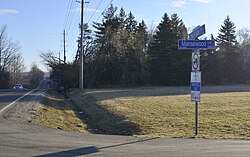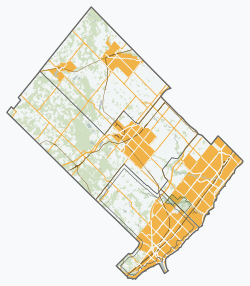
The oat, sometimes called the common oat, is a species of cereal grain grown for its seed, which is known by the same name. While oats are suitable for human consumption as oatmeal and rolled oats, one of the most common uses is as livestock feed. Oats are a nutrient-rich food associated with lower blood cholesterol when consumed regularly.
John Stuart may refer to:
Cupar is a town, former royal burgh and parish in Fife, Scotland. It lies between Dundee and Glenrothes. According to a 2011 population estimate, Cupar had a population around 9,000, making it the ninth-largest settlement in Fife, and the civil parish a population of 11,183. It is the historic county town of Fife, although the council now sits at Glenrothes.

A bushel is an imperial and US customary unit of volume based upon an earlier measure of dry capacity. The old bushel is equal to 2 kennings (obsolete), 4 pecks, or 8 dry gallons, and was used mostly for agricultural products, such as wheat. In modern usage, the volume is nominal, with bushels denoting a mass defined differently for each commodity.

The Free Church of Scotland was a Scottish denomination which was formed in 1843 by a large withdrawal from the established Church of Scotland in a schism known as the Disruption of 1843. In 1900, the vast majority of the Free Church of Scotland joined with the United Presbyterian Church of Scotland to form the United Free Church of Scotland. In 1904, the House of Lords judged that the constitutional minority that did not enter the 1900 union were entitled to the whole of the church's patrimony, the Free Church of Scotland acquiesced in the division of those assets, between itself and those who had entered the union, by a Royal Commission in 1905. Despite the late founding date, Free Church of Scotland leadership claims an unbroken succession of leaders going all the way back to the Apostles.

The Free Presbyterian Church of Scotland was formed in 1893. The Church identifies itself as the spiritual descendant of the Scottish Reformation. The Church web-site states that it is 'the constitutional heir of the historic Church of Scotland'. Its adherents are occasionally referred to as Seceders or the Wee Wee Frees. Although small, the church has congregations on five continents.

The Presbyterian Church in Canada is a Presbyterian denomination, serving in Canada under this name since 1875. The United Church of Canada claimed the right to the name from 1925 to 1939. According to the Canada 2001 Census 409,830 Canadians identify themselves as Presbyterian, that is, 1.4 percent of the population.
William, Will, Willie, or Bill Robertson may refer to:
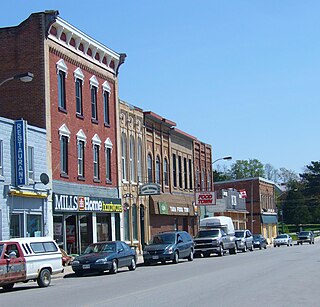
Tara is an unincorporated community in the municipality of Arran–Elderslie, Bruce County, in southwestern Ontario, Canada. It is a designated place and had 1,037 residents and 458 dwellings as of the 2011 census. Tara is in geographic Arran Township and is located on the Sauble River. It has an area of 2.39 square kilometres (0.92 sq mi) and an urban area that covers 63.5 square kilometres (24.5 sq mi).
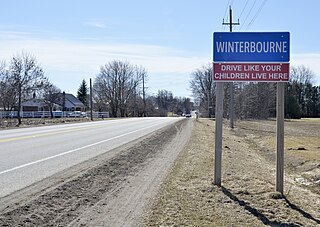
Winterbourne is a village located to the east of the Grand River in the township of Woolwich in the Regional Municipality of Waterloo, Ontario, Canada. It is located just northeast of the city of Waterloo. The fine stonework of the Scottish stonemasons can be seen in many of the older buildings throughout the settlement.
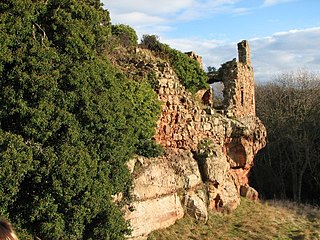
Innerwick is a coastal civil parish and small village, which lies in the east of East Lothian, five miles from Dunbar and approximately 32 miles from Edinburgh.
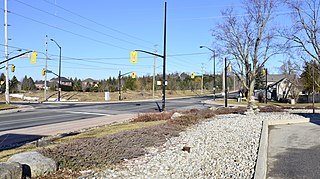
Haltonville is an unincorporated community in Milton, Ontario, Canada.

Scotch Block is an unincorporated community in Halton Hills, Ontario, Canada.
Durham is a community in the Canadian province of Nova Scotia, located in Pictou County on Nova Scotia Route 376 alongside the West River of Pictou. The centre of the village is about 10 km up-stream from the town of Pictou. The Durham Presbyterian Church is located near the bridge on the west side of the river, and the Durham Community Hall is on the east side of the river, adjacent to the cemetery.

Alexander R. MacEwen (1851–1916) was Scottish writer, minister, professor and Moderator of the United Free Church of Scotland.
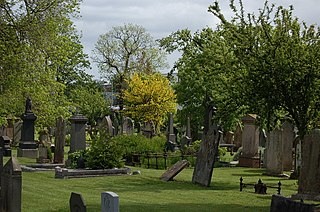
Balmoral Cemetery is a cemetery in the Malone area of South Belfast, Northern Ireland, opened in 1855.

Boston Presbyterian Church is a Presbyterian church in Scotch Block of Halton Hills, Ontario, Canada. Services have been held in the area known as Scotch Block since 1820. It was in 1824 that a parcel of land was purchased from Andrew Laidlaw, sufficient in size for a burying ground and a house of worship. Construction began in 1825 and was completed in 1835. The first minister, Rev. Peter Ferguson, was inducted April 11, 1832.

James MacGregor FRSE (1832–1910) was a Scottish minister and philanthropist. He was Moderator of the General Assembly of the Church of Scotland in 1891. In 1886 he was made Chaplain in Ordinary to Queen Victoria, in 1901 Chaplain to King Edward VII, and in 1910 to King George V, serving three monarchs in all.

Eastwood is a residential neighbourhood in the city of Glasgow, Scotland. It is situated south of the River Clyde, and is part of the Newlands/Auldburn ward under Glasgow City Council.

Pleasance Church was a Presbyterian church on the Pleasance in the Southside of Edinburgh, Scotland. Originating in the Relief Church in the 1820s, the congregation united with Charteris Memorial in 1953.
